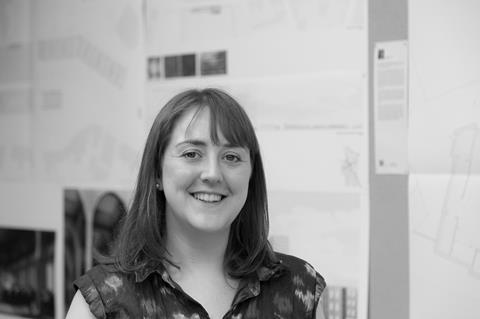An architect’s success should be measured against whether it meets the brief not the zeitgeist, says Eleanor Jolliffe

The past year has been a tumultuous one in architecture. The Hackitt Review, ongoing Brexit negotiations, a sensational and yet poorly attended RIBA election, the RIBA president lambasting the profession’s most common procurement route… I could go on.
The ongoing conversations across the architectural press about the relevance of architecture and the lack of will to consolidate our position or define a new direction seem to mirror the national mood more broadly.
With Brexit fast approaching, the country (or at the very least its press) seems to be in a tailspin of existential angst: Who are we as a nation? What will we be without the EU? Will our economy continue to function?
These are unsurprising questions, as are those being asked across architecture. If there is a mood of existential reflection ahead of the biggest shift to our national economy and governance in more than 40 years it is only natural that the nation’s industries and professions should go through a similar period of self-reflection.
What has surprised me is the short-term thinking of some of the discussion. The reaction on Twitter and elsewhere to this year’s Stirling Prize winner typified it – broadly criticising the Bloomberg building for its high budget and failure to be relevant to today’s society. They implied it reflected poorly on the profession by failing to live up to some ideal of the future of the profession – which we have yet to define.
I am not sure this critique is fully justified. Architecture is not a patron-less artform, nor is it an industry that can, or should, make a knee-jerk response to the political or social zeitgeist (pavilions/exhibitions excepting).
The Stirling Prize is, according to the RIBA, awarded to Britain’s best building and is “judged against a range of criteria including design vision; innovation and originality; capacity to stimulate, engage and delight occupants and visitors; accessibility and sustainability; how fit the building is for its purpose and the level of client satisfaction”.
I did not see in that list, nor would I expect to, the “ability to critique the society in which it was built”. Built architecture rarely has that privilege. It was one of the reasons I enjoyed my part II thesis so much.
To attempt to re-invent a prize or a professional art form based on the (often necessarily slow) building of homes and cities, in the image of an artistic community that responds to the social movements of the day would be a mistake.
By necessity and professional integrity architects should be thinking in time blocks of 10 to 20 years, as a minimum. Some of the buildings we build will outlast us and potentially our children. Should they consider the society we are designing in? Absolutely yes, or else they are in danger of not fulfilling their brief. Should they cease to be useful the second society moves on? No, because they would then make us exactly what we are afraid of becoming – luxury window dressing for prestige building projects that have money to waste.
I recently dug out the now-out-of-print Architect and Patron – a university reading list purchase – from the back of my bookshelf. The opening page articulates this disquiet better than I can: “If it were possible for an architect to manifest his creative instincts and talents, unrestricted by a real or imaginary client, the result could be sculpture but it would not be architecture. By its very nature, architecture demands reference to humanity… Between [the architect] and his design there must always be a real – or hypothetical – representative of mankind: the patron, the client, or whatever one cares to call him.” The point may have been made in 1961 but it is no less valid for its age.
The success of architecture should be judged by its skilful response to the client’s brief. If architects are frustrated by their briefs or clients perhaps that is an argument for better exploiting our talents and influence to shape the society that shapes our clients – rather than re-form architecture as a profession of expensive sculptors.
I will finish with a quote from Bruce Allsopp (also cadged from Architect and Patron): “The architect is tied to humanity in a way which the painter, poet or musician is not. This is, in a way, a limitation, but it is also the chief glory of his art.”
















7 Readers' comments